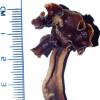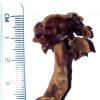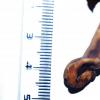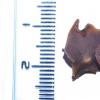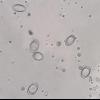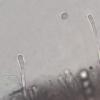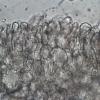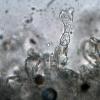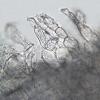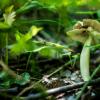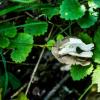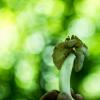
29-12-2025 17:44
Isabelle CharissouBonjour,J'aimerais savoir si d'autres personnes au

29-12-2025 17:12
 Bernard CLESSE
Bernard CLESSE
Bonjour à toutes et tous,Pourriez-vous m'aider à

12-11-2021 00:03
Lepista ZacariasHi everybody,A week ago in my fiels trip I noticed

29-12-2025 17:01
Gernot FriebesHi,I'm looking for help with this hyphomycete with

29-12-2025 08:30
Hello.A tiny ascomycete sprouting under Juniperus

29-12-2025 10:15
Hulda Caroline HolteHello, I found and collected this propoloid ascom

29-12-2025 09:38
Oskari VirtanenHi,could anyone help me identify this, I suspect P
 Hello, everyone
Hello, everyoneI have doubts about this specimen, to be exact I choose between H. elastica and H. latispora. It was collected in mixed forest - oaks (Q.robur), linden and maple.
There are measurements:
Spores: 19,4-22,5*12,2-15,5 um
Asci:290-325*17-19 um
Croziers present
Underside of cup is almost smooth, microscopically a palisade layer of 3-celled hyphae is visible, in general this structures are 30-40 um long. Stalk is more 'furry' macroscopically, and this hyphae are much longer - 80-90 um and more separated.
Paraphyses do not contain brown pigment.
help me to choose, please:)
Best wishes,
Ira



H. latispora must be more hairy?
With best wishes,
Irina
Well, the specimen seems very old, or rottening, and in these conditions can be very difficult, if not impossible, to choose. The stipe seems pigmented, this is a feature that is not normally present in any species in the section Elasticae. But I think it's only too old.
One single young specimen should give the solution... :)
However, the collection was consisting only in one ascoma?

I've found photos of fresh specimen (attached above) and as for me it doesn't look like G.infula. What do you think?
Best regards,
Irina
https://www.google.si/search?q=Helvella+lacunosa&client=firefox-a&hs=132&rls=org.mozilla:en-US:official&channel=sb&tbm=isch&tbo=u&source=univ&sa=X&ei=nP8fVNvFIeTe7Aa974H4Cg&ved=0CCEQsAQ&biw=1920&bih=900
Likely then, that is valid for all hellvelas, doh I did no see so dark elastica as yours ever (probably they hide very good in surrounding autmn leafs).
See my collection: http://agrozoo.net/gallery/Helvella
Mybe the one before last goes towards your specimen regarding coloration.
The fresh specimen looks like hellvela elastica to me, seen one super fresh Gyromitra infula yesterday, I think they can't bi mistaked (fresh).
See also this & compare to your images from first post: http://agrozoo.net/jsp/Galery_one_image.jsp?id_galery_obfuscated=8a4596c4119e4d548c0fc6c35d9d80d4
The stalk looks the same, the cap can be easily deformed to deformation as on your images (by my expiriemnce).
All species in the section Elasticae have a white stalk, when fresh, as this specimen in the photos taken by the collector.
In other sections the things may be different (as in H. lacunosa), but in that case not in all specimens (segregate species?).
With the images added, I think it's more correct Helvella latispora in the broad concept of Häffner, 1987. But I keep a great doubt that it fits with the original Boudier's meaning, with spores very short and broad.
No doubt that it is not a Gyromitra of course, completely different colours, ectal excipulum spores... at all!
Regards


